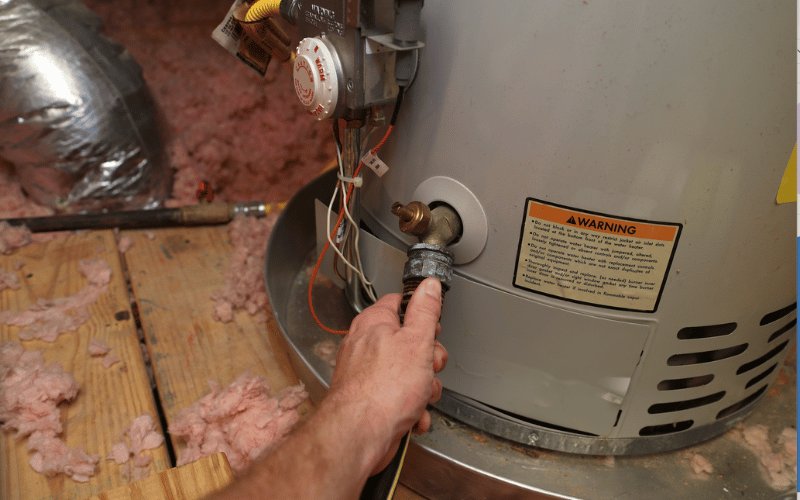Ways to Properly Maintain Your Home's Hot Water System
Ways to Properly Maintain Your Home's Hot Water System
Blog Article
What're your opinions regarding Tips on Maintaining a Water Heater?

Warm water is essential for everyday convenience, whether it's for a rejuvenating shower or cleaning dishes. To guarantee your hot water system runs effectively and lasts much longer, routine upkeep is vital. This article offers useful ideas and understandings on exactly how to keep your home's hot water system to avoid interruptions and pricey fixings.
Introduction
Maintaining your home's hot water system may appear daunting, yet with a few easy steps, you can ensure it operates efficiently for several years to find. This overview covers every little thing from understanding your hot water system to DIY maintenance suggestions and understanding when to call specialist help.
Importance of Maintaining Your Hot Water System
Routine maintenance not only prolongs the life expectancy of your warm water system yet additionally guarantees it runs successfully. Disregarding upkeep can bring about decreased efficiency, higher power costs, and also early failing of the system.
Indicators Your Warm Water System Demands Upkeep
Recognizing when your warm water system requires interest can stop significant problems. Watch out for indicators such as irregular water temperature level, unusual noises from the heater, or rusty water.
Recognizing Your Warm Water System
Prior to diving right into maintenance tasks, it's useful to understand the basic components of your warm water system. Commonly, this consists of the hot water heater itself, pipes, anode rods, and temperature controls.
Month-to-month Upkeep Tasks
Routine regular monthly checks can help catch small concerns before they escalate.
Flushing the Hot Water Heater
Purging your water heater removes debris accumulation, enhancing efficiency and prolonging its life.
Monitoring and Replacing Anode Rods
Anode poles stop corrosion inside the tank. Evaluating and changing them when worn out is crucial.
Evaluating and Changing Temperature Setups
Readjusting the temperature setups makes sure optimal performance and safety.
DIY Tips for Maintenance
You can execute a number of maintenance tasks yourself to maintain your hot water system in leading condition.
Checking for Leakages
Frequently inspect pipelines and connections for leakages, as these can result in water damage and greater bills.
Examining Pressure Alleviation Valves
Evaluating the pressure safety valve ensures it works correctly and protects against extreme stress accumulation.
Shielding Pipes
Insulating warm water pipes minimizes heat loss and can conserve power.
When to Call an Expert
While do it yourself maintenance is beneficial, some problems require expert knowledge.
Facility Problems Calling For Expert Aid
Examples consist of significant leaks, electric problems, or if your hot water heater is consistently underperforming.
Routine Specialist Maintenance Perks
Specialist maintenance can include detailed evaluations, tune-ups, and making certain compliance with security criteria.
Conclusion
Routine upkeep of your home's hot water system is vital for performance, longevity, and expense financial savings. By following these suggestions and recognizing when to look for professional assistance, you can make certain a trusted supply of hot water without unforeseen disturbances.
How to Maintain an Instant Hot Water Heater
Before tinkering with your hot water heater, make sure that it’s not powered on. You also have to turn off the main circuit breaker and shut off the main gas line to prevent accidents. Also turn off the water valves connected to your unit to prevent water from flowing into and out of the appliance. 2. When you’re done, you have to detach the purge valves’ caps. These look like the letter “T†and are situated on either side of the water valves. Doing so will release any pressure that has accumulated inside the valves while at the same time avoid hot water from shooting out and burning your skin. 3. When the purge valves’ caps are removed, you have to connect your hosing lines to the valves. Your unit should have come with three hoses but if it didn’t, you can purchase these things from any hardware or home repair shops. You can also get them from retail stores that sell water heating systems. Read the user’s manual and follow it to complete this task properly. When the hosing lines are connected, open the purge port’s valves. 4. You should never use harsh chemical cleaners or solutions when cleaning your unit. Make use of white vinegar instead. It should be undiluted and you’ll probably use about 2 gallons. 5. Now flush your water heater. This task should probably take about 40 minutes. We can’t give you specific directions for this because the procedure is carried out depending on the type, model and brand of your heater. With that being said, refer to the user’s manual. 6. When you’re done draining the unit, you have to turn off the purge port valves again. Remove the hosing lines that you earlier installed on each of the water valves. Put the valve caps (purge port) back in their respective places and be very careful so as not to damage the rubber discs that are found inside these caps. 7. Now that everything’s back in place, check your user’s manual again to find out how to reactivate your water heating system. 8. Once it is working, turn one of your hot water faucets on just to let air pass through the heater’s water supply pipes. Leave the tap on until water flows smoothly out of it. https://www.orrplumbing.com/blog/2014/september/how-to-maintain-an-instant-hot-water-heater/

Do you really like reading about Tips For Maintaining Your Hot Water Heater? Try to leave a review down the page. We would be delighted to listen to your opinion about this blog posting. We hope that you come back again soon. If you liked our page please consider to pass it around. Thanks a bunch for being here. Return soon.
See Availability Report this page